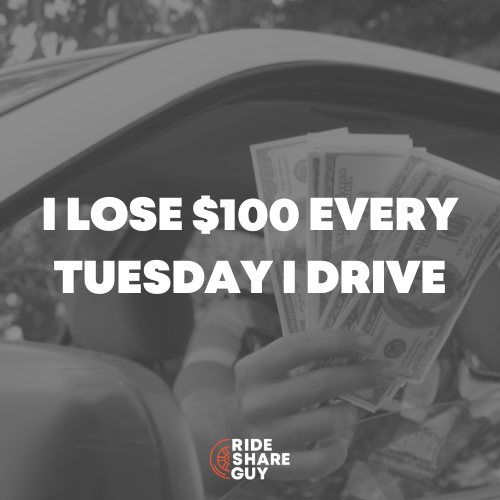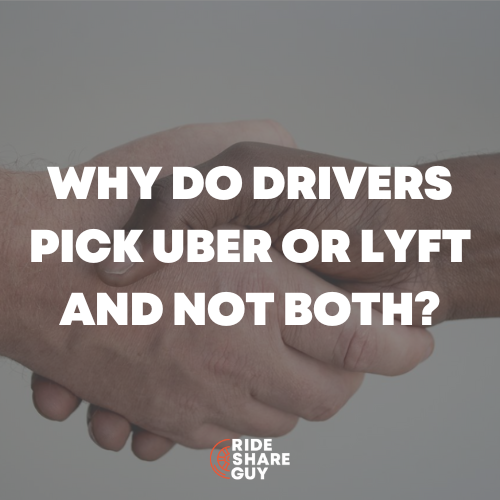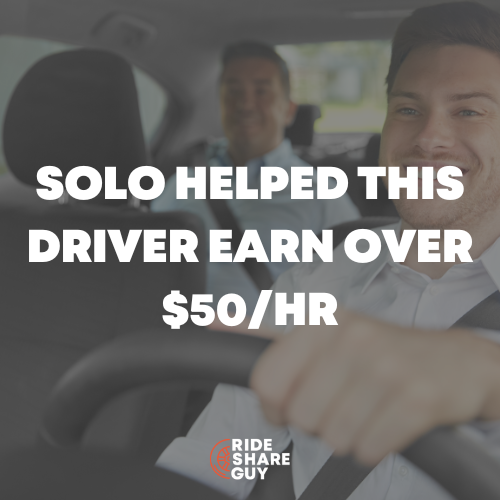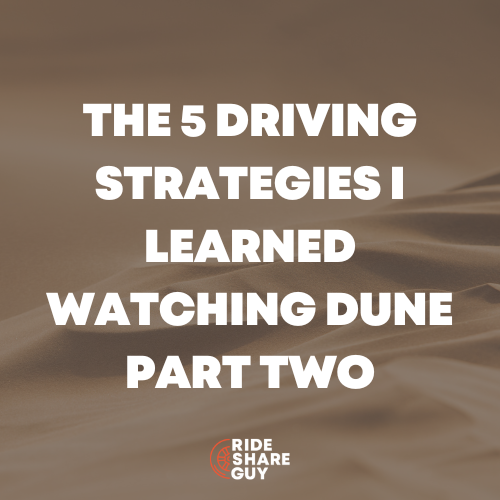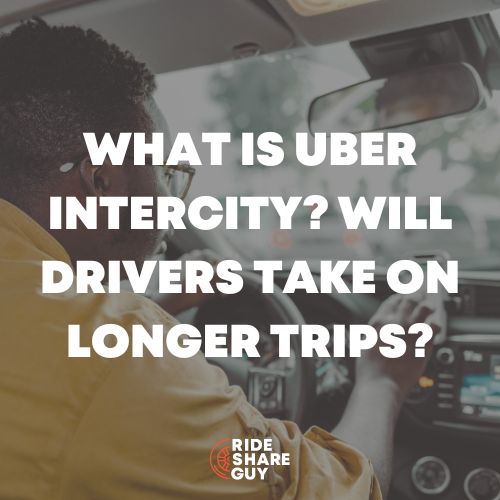We talk a lot about driving in California, but this post is for all those mid-size market drivers! Today, RSG contributor Melissa Berry interviews Jeff Brown, who drives in Columbus, OH.
Jeff drives in Columbus, OH, a city of just about 900,000 people. He first started driving because he wanted to earn some extra money after becoming a new Dad. He was also interested in the sharing economy, as he has worked as a trainer and public speaker, and figured it would be a great way to meet new people.
Jeff first started driving in 2016 and almost immediately started tracking his earnings. He found that he made well-over minimum wage, and recently he reached out to Harry to discuss what he found, share his earnings tracking sheet, and share his best practices for drivers in mid-range to small-sized cities.
The following is based on an edited and condensed interview with Jeff, where he shares his top tips for driving in a mid-size market.
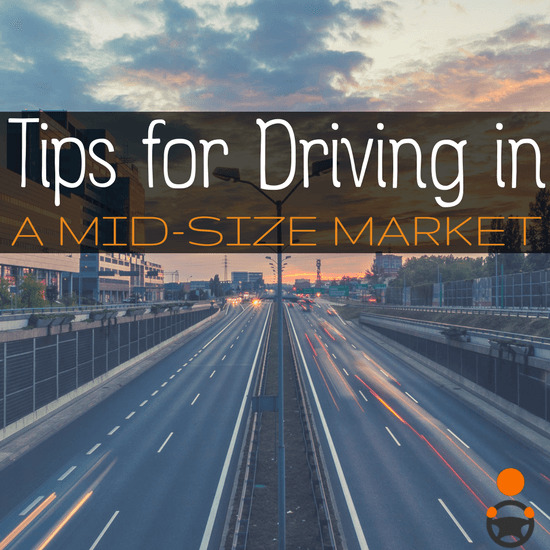
Driving in 2016 Compared to 2018
Even though it’s only been two years, driving back in 2016 seems like eons ago in terms of the on-demand economy because so much as changed. Jeff got started driving a few weeks before the Republican National Convention in Cleveland, OH.
The RNC was interesting in terms of people met, but was only somewhat financially lucrative for Jeff. As many people know, Uber pays different rates in different cities. At the time, Uber was paying about 30% less in Cleveland than what they were paying in his home city of Columbus. He ended up driving a lot, using a lot of gas, and made about $800 during the convention working 12 hours a day.
However, the real benefit for Jeff was getting to meet so many people who he never would have met otherwise. Jeff did it for kind of cultural research. Most of the passengers were from out of state or some from other countries, and so he was a bit of a tour guide and a host. It really paid off being from the city and knowing about it, but you don’t have to be a native to be informed about your city streets and history!
Tips for Mid-Sized Markets
Get to Know the Type of City You Live In
Jeff only drives for Uber, as Lyft inexplicably didn’t accept him to drive. Luckily, Uber is very popular in Columbus, from Jeff’s perspective, so it’s possible to still do a lot of driving. Jeff primarily drives in Columbus, OH (population: nearly 900,000 people) but has also driven in Cleveland (a smaller market of 400,000 people).
The type of city, no matter what the size, can help to influence what you earn as a driver. For instance, Columbus is a rapidly growing city. Many people don’t know that Columbus is the 14th largest city by population in the United States, but t’s a medium sized metro area. It has Ohio State University, which is the second largest university in the country. There are fifty thousand students on campus, which Jeff lives about two miles from.
In addition, there are some 500 companies. It’s really a Millennial town – which means many people are familiar with and use Uber and Lyft. There are many tech companies, young professionals and entrepreneurs, which makes it an excellent location to support the on-demand economy.
Even if your city isn’t as vibrant, get to know the busy areas. It might be downtown, or it might be near the local university. One size doesn’t necessarily fit all in mid- to small-sized markets, but there is always some time of day or year when your city gets busy – you just have to be proactive and find out when!
Be Strategic About When You Drive
Jeff is a part-time driver and started by primarily driving evenings and weekends. Predictably, Saturday nights were the most profitable, with Jeff bringing in $150 almost every Saturday.
However, in small- to mid-sized cities, you need to do research on events. Unlike San Francisco or New York, which probably have something going on every night, Columbus has specific events that really drive Uber requests. Football games, concerts, the Ohio State Fair are all big traffic days for Uber (and probably Lyft). Pay attention to these events, learn when/where they are and learn pick up/drop off spots so you don’t get stuck in the melee.
If you’re not sure where to start on finding out about events in your city, visit the arena website for your local stadium/arena/etc. It may take some trial and error – in Columbus, Jeff found out that even though it would seem like the professional hockey team would drive surge, it ended up not being worth it for him.
Related: 8 Must Have Apps for Rideshare Drivers
In bigger cities, it may be profitable to drive during the early “rush hour” mornings or for business travelers – but here in Columbus, this was a dud. Evenings and events are when you’ll earn the most in this market, and may be true for nearly all small- to mid-sized markets.
Get In, Get Out
One thing that can really hold you up (and cut into your profits) driving in a small- to mid-sized market is traffic. Uber and Lyft have pick up/drop off points for the bigger events – but Jeff recommends avoiding those areas and finding your own pick up and drop off points.
This is again where knowing your city comes in handy! Over time, Jeff has found backways, alleys and side roads where he can get people close to the events while not getting stuck in traffic himself. Jeff even recommends avoiding a 4.0 surge if it puts you in the middle of traffic. He recommends accepting a 2.5 surge if it will keep you out of 20-30 minutes of traffic. Plus, your passengers will appreciate getting there a little faster!
Stay Busy, Stay Focused
One of the things that jumped out to us at RSG, when Jeff reached out to us about being a guest, was how focused and strategic Jeff is about making money. Jeff not only drives for Uber, he also has driven delivery – because Jeff knows exactly how much he wants to make, and he makes it happen. This is possible in a small- to mid-sized market if you have the option to do delivery.
Jeff developed a spreadsheet, which you can access here, to find out how much money he was earning driving for Uber. He wanted to find out how much he made per hour and what his average trip was. In this market, Jeff is averaging $7.48 per trip and $15.50 an hour.
This doesn’t include expenses, but Jeff did a rough calculation and estimated that if he grossed $100 from Uber, he spent around $28 in expenses. He estimates about 28% of his gross earnings go to expenses. This is why he started driving delivery, to see how much he earned per delivery and per hour and see if that number was better/worse than driving for Uber.
Related: How to Drive for Multiple Delivery Aps
Driving delivery also helps keep him busy, meaning Jeff is maximizing every hour he spends on the road. For both part time and full time drivers, staying busy for the hours you’re driving is crucial to having a higher earning per hour. Jeff found that, due to stacking deliveries, he actually earned more doing restaurant deliveries more often than he did just driving for Uber. By stacking 2-3 deliveries, Jeff doubles and triples his hourly earnings.
You can sign up for Postmates, DoorDash, or Caviar using our referral links.
Related: Need help managing driving and delivery? Let Mystro organize your trips for you!
In small to mid-sized markets, driving for Uber can be a marginal activity, better suited to part time. For Jeff, his motivation is money and also interacting with other people, so Uber has been a means to an end for him. For drivers who have their own businesses, services or even gigs (i.e. musicians), they frequently will recommend or network with their passengers, so there are potential side benefits to driving rideshare.
Takeaways for Drivers in Small- to Mid-Sized Markets
Jeff is a true wealth of information on mid-sized markets, but one of the most interesting takeaways from our conversation was his recommendation that people in mid-sized cities diversify to make a better income. For drivers in mid-sized cities, diversification by driving for Uber and Lyft or rideshare and delivery is necessary to make that bigger hourly income. There are drivers who only drive for one service full-time, but you’re more likely to see people with other part-time jobs or businesses they’re building.
A few more suggestions from Jeff? He recommends:
- Create flexibility in your life: The more flexible you are, the more likely you can take advantage of unforeseen opportunities for big earnings through surge/Prime Time and stay busy. For example, your city’s public transit workers or taxi drivers strike, a sudden severe weather event, one of the platforms goes down (e.g. if Uber’s system goes down, Lyft becomes super busy and vice versa)
- Pay attention to the weather forecast and drive whenever there is bad weather (snow, rain, fog, freezing rain, etc.). This is one of the most certain times that it will surge, regardless of other variables. While you will want to weigh other variables, like the increased risk of an accident, driving during bad weather typically can be a money maker (even more so if you have a 4×4 or other vehicle that handles inclement weather well).
- Research concerts, sporting events, festivals and other events that attract tens of thousands of people, especially ones that have most people leaving at the same time! For example, at a football game, most people leave at approximately the same time (when the game ends), whereas a festival, even if it’s huge, people come and go all day, so the rides are more dispersed throughout the day.
- Spend time when you’re at home or work with your app open and track when and where the surges appear. I’ve done this for 20 months and I have a VERY good idea of the days and times when surges happen, and where they occur. There are definitely patterns! This allows me to anticipate the surge (generally an effective strategy) rather than chasing the surge (generally a non-starter and time waster).
The bottom line is that unlike the busiest markets like NYC or San Francisco, in many markets, there are significant blocks of time where you don’t make enough money for ridesharing driving to be worthwhile, so it pays to know when and where to drive in small- to mid-sized markets.
Do you have questions for Jeff or comments on driving in smaller or mid-sized markets? Let us know in the comments!
Jeff Brown lives in Columbus, Ohio and has been an Uber driver since June 2016 (2,250 rides). He also has more than 3,000 deliveries under his belt in that time with Postmates, Doordash, Grubhub, UberEATS, Shipt and Instacart.
Until recently, Jeff worked for 13 years as a seminar leader and public speaker in the field of conflict resolution and interpersonal communication, leading more than 600 trainings in 9 countries and 30 U.S. states.
He’s currently reinventing himself as a Cultural Architect, meaning he works on projects that help to create a sustainable future by getting to the underlying cultural causes of the world’s problems.
-Melissa @ RSG
